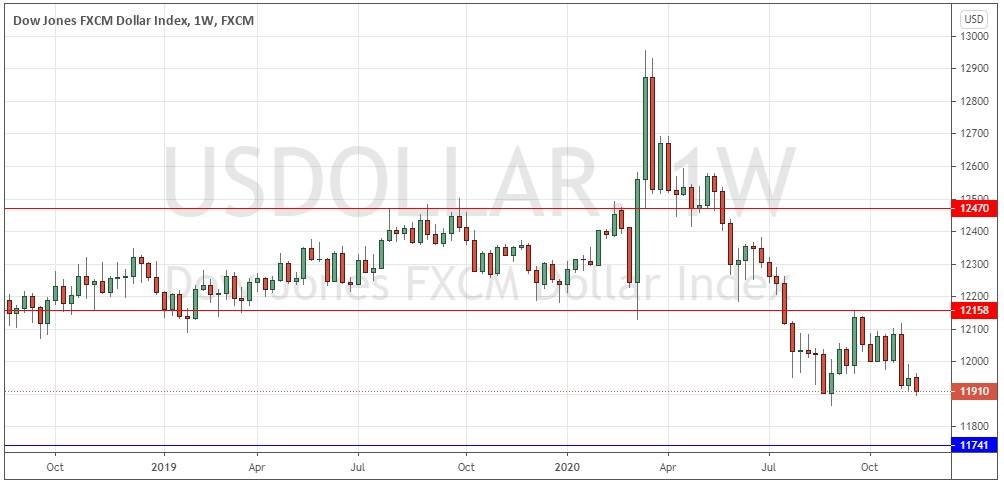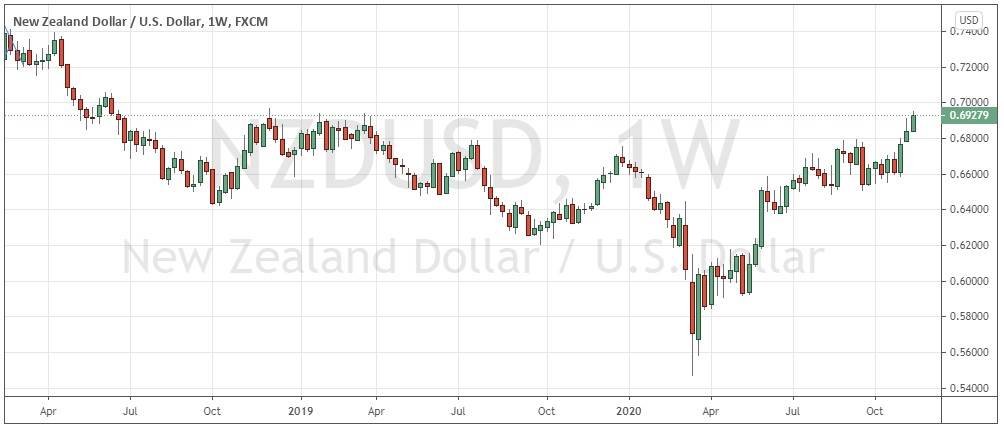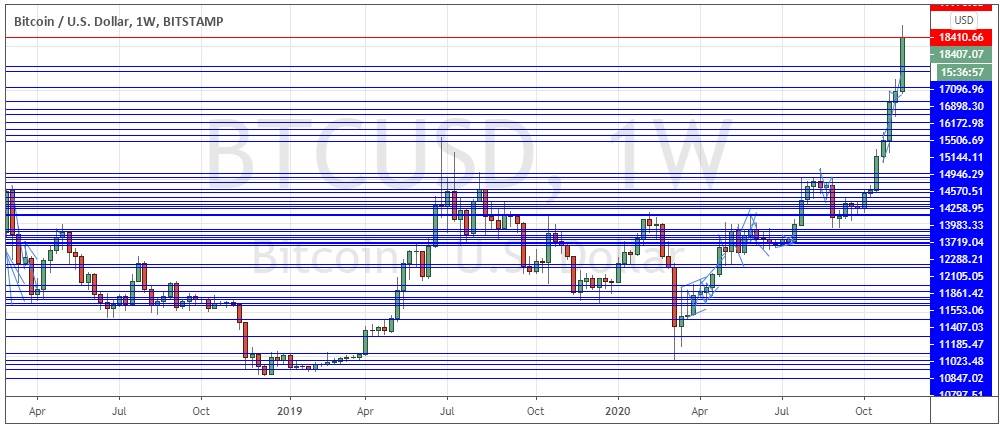The difference between success and failure in Forex trading is very likely to depend mostly on which currency pairs you choose to trade each week and in which direction, and not on the exact trading methods you might use to determine trade entries and exits.
Big Picture 22nd November 2020
In my previous piece last week, I saw the most attractive trade opportunities as likely to be in a short trade in the USD/JPY currency pair, and a long trade in the S&P 500 Index following a daily close above 3600. While the price of the USD/JPY currency pair fell by 0.70% over the week, after closing at 3626.92 on Monday, the S&P 500 Index closed on Friday down by 1.91% from that price, so this was not a profitable call overall.
Last week’s Forex market saw the strongest rise in the relative value of the New Zealand dollar and the strongest fall in the relative value of the U.S. dollar.
Fundamental Analysis & Market Sentiment
Last week was the quietest week the markets have seen for a while, with lower volatility (especially in Forex), due to the fact that there were few important news items with the exception of better than expected Australian economic data and a slightly dovish signal from the Australian central bank. President Trump is still refusing to concede the Presidential election and has alleged fraud, claiming he has won if only legal votes are counted. All the major news networks have called the race for Joe Biden, who has already been congratulated by most world leaders. Joe Biden seems to have won the popular vote by about 4%. The recount in Georgia has not changed the result there and a Trump campaign lawsuit has just been thrown out in Pennsylvania.
Strangely, although Biden seems to have no chance to not be duly elected as the 46th President, it is still possible to place a bet on his becoming the next President and to receive a 5% payout.
Another notable feature of the election result was that the Democrats seem to have made either no gains or only very limited gains in congressional elections, and it seems quite likely that Republicans will retain control of the Senate, although this will be determined by run-off elections in Georgia in January. If the Democrats win these, then there may be a stronger economic stimulus package, which could boost the U.S. stock market and weaken the U.S. Dollar.
Although stock markets are certainly still generally bullish, last week’s greater focus on worsening coronavirus infection rates in the U.S.A. seems to have had some short-term effect as we see a small selloff. However, it is worth noting that last Monday saw an all-time high daily close by the S&P 500 index.
Last week’s major story in the U.S. has been several consecutive days of new all-time highs in confirmed new coronavirus cases in the U.S.A. with daily numbers increasing strongly, now coming in at almost 200,000 and deaths at almost 2,000 per day.
The big coronavirus stories globally right now are the sharp rise in deaths worldwide, and the fact that two major pharmaceutical companies, Pfizer, and AstraZeneca, seem to have a 90%+ effective vaccine almost ready.
Last Friday again saw a record number of new cases confirmed globally, at 662,957. New cases are rising exponentially across the world. Several European nations have imposed new lockdowns in an attempt to get the situation under control. The European Union is now reporting more deaths than the U.S. but is showing a fall in the number of new cases.
Europe is leading the share of the global death toll, at about 47%, while the U.S.A. is accounting for approximately 22%, and Latin America has 19% of the total. The strongest growth in new confirmed cases is happening in Albania, Algeria, Azerbaijan, Bangladesh, Belarus, Brazil, Burma, Canada, Croatia, Cyprus, Denmark, Estonia, Finland, Georgia, Germany, Greece, Guatemala, Indonesia, Iran, Italy, Japan, Jordan, Kenya, South Korea, Kosovo, Latvia, Lebanon, Lithuania, Mali, Mongolia, North Macedonia, Norway, Pakistan, Panama, Paraguay, Poland, Portugal, Romania, Russia, Serbia, Slovenia, Sudan, Turkey, U.S.A., Ukraine, and Uruguay.
The coming week is likely to bring a similarly low level of activity to the Forex market. However, there is little high-impact economic data due over the coming week except the Federal Reserve’s FOMC Meeting Minutes.
Technical Analysis
U.S. Dollar Index
The weekly price chart below shows the U.S. Dollar Index printed a bullish engulfing candlestick. It closed near the low of its range, which is a bearish sign. Significantly, this weekly close was lower than those from both 3 and 6 months ago – these are bearish signs. Overall, next week’s price movement in the U.S. dollar looks likely to be downwards.
NZD/USD
The NZD/USD Index currency pair closed Friday at 2.5 year weekly high closing price, which is a bullish sign. The candlestick closed near the top of its price range, which is a bullish sign. However, the price has reached an area which has held as a zone of resistance for a long time, so there may be an obstacle to a further immediate price rise.
Bitcoin
Bitcoin has continued its strong rose after breaking up above the psychologically important $15,000 area a few weeks ago. The weekly candlestick was strongly bullish with a wide range, and closed near its high, with the closing price the highest we have seen in almost 3 years. These are all bullish signs. However bulls should be careful, as the price is still being suppressed by the key resistance level at $18,411, not to mention the all-time high just below the huge round number at $20,000 acting as a potentially strong barrier to any further rise in price.
Bottom Line
I see the best likely opportunities in the financial markets this week in taking cautious short-term long trades in Bitcoin against the USD and in the NZD/USD currency pair.
